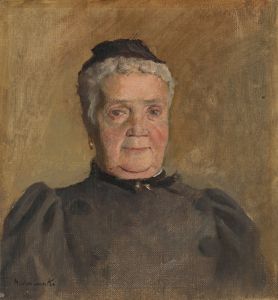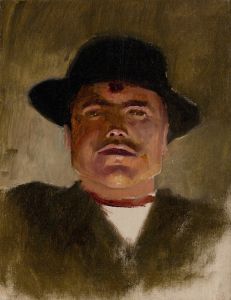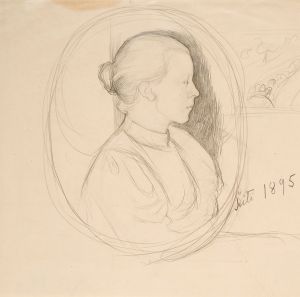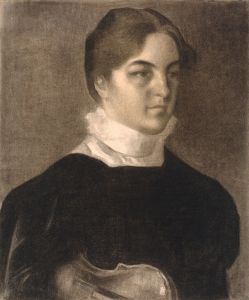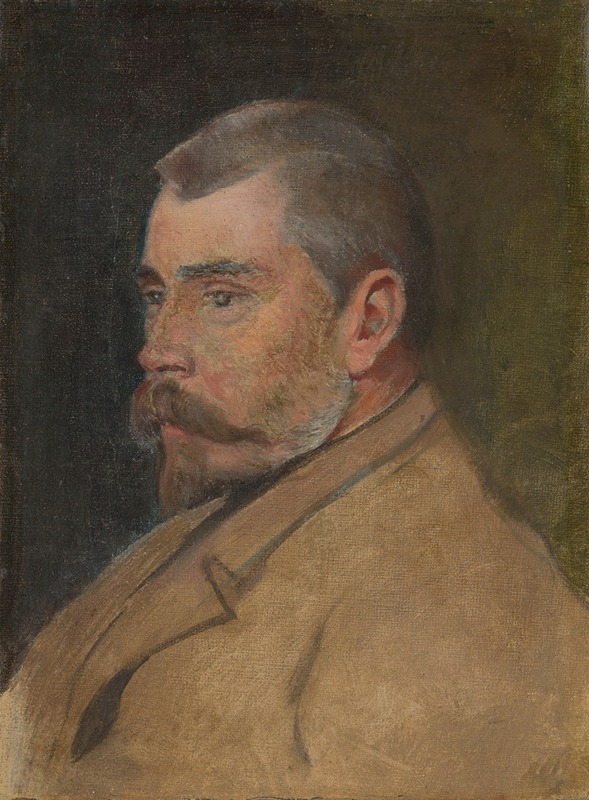
Portrait of Brother-in-law, Štefan Czóbel
A hand-painted replica of Ladislav Mednyánszky’s masterpiece Portrait of Brother-in-law, Štefan Czóbel, meticulously crafted by professional artists to capture the true essence of the original. Each piece is created with museum-quality canvas and rare mineral pigments, carefully painted by experienced artists with delicate brushstrokes and rich, layered colors to perfectly recreate the texture of the original artwork. Unlike machine-printed reproductions, this hand-painted version brings the painting to life, infused with the artist’s emotions and skill in every stroke. Whether for personal collection or home decoration, it instantly elevates the artistic atmosphere of any space.
Ladislav Mednyánszky, a prominent Slovak-Hungarian painter, is known for his evocative and atmospheric works that often explore themes of nature, human emotion, and the human condition. One of his notable paintings is "Portrait of Brother-in-law, Štefan Czóbel." This work exemplifies Mednyánszky's skill in capturing the essence of his subjects through his distinctive style, characterized by a blend of realism and impressionistic techniques.
Ladislav Mednyánszky was born on April 23, 1852, in Beckov, which was then part of the Kingdom of Hungary and is now located in Slovakia. He came from an aristocratic family, which afforded him the opportunity to study art in various European cities, including Munich and Paris. His exposure to different art movements and his personal experiences significantly influenced his artistic development.
The painting "Portrait of Brother-in-law, Štefan Czóbel" is a testament to Mednyánszky's ability to convey deep emotional resonance through portraiture. While specific details about the creation date of this painting are not widely documented, it is known that Mednyánszky had a close relationship with his family, often depicting them in his works. Štefan Czóbel, the subject of this portrait, was Mednyánszky's brother-in-law, which suggests a personal connection and familiarity that likely informed the intimate nature of the painting.
Mednyánszky's portraits are renowned for their psychological depth and subtle use of color and light. In this particular work, he employs a muted palette, which is typical of his style, to create a somber yet profound atmosphere. The brushwork is both delicate and expressive, capturing the nuances of Czóbel's expression and demeanor. Mednyánszky's technique often involved layering thin glazes of paint to achieve a luminous effect, allowing the viewer to perceive the inner life of the subject.
The background of the portrait is understated, focusing the viewer's attention on Czóbel's face and expression. This approach is consistent with Mednyánszky's interest in the inner world of his subjects, as he sought to reveal their character and emotions rather than merely their physical appearance. The painting reflects Mednyánszky's broader artistic philosophy, which emphasized the exploration of the human spirit and the complexities of existence.
Throughout his career, Mednyánszky remained somewhat on the periphery of mainstream art movements, choosing instead to follow his unique vision. His works, including "Portrait of Brother-in-law, Štefan Czóbel," are appreciated for their introspective quality and their ability to transcend the specificities of time and place. Mednyánszky's art continues to be celebrated for its emotional depth and technical mastery, securing his place as a significant figure in Central European art history.
In summary, "Portrait of Brother-in-law, Štefan Czóbel" by Ladislav Mednyánszky is a compelling example of the artist's skill in portraiture, characterized by its emotional depth and subtle execution. The painting not only reflects Mednyánszky's personal connection to his subject but also his broader artistic goals of exploring the human condition through art.









